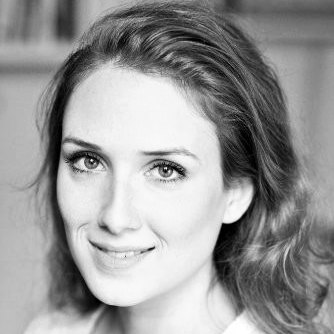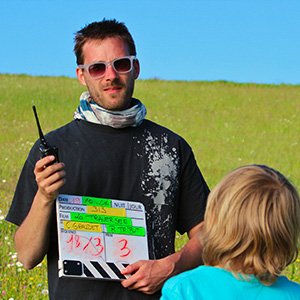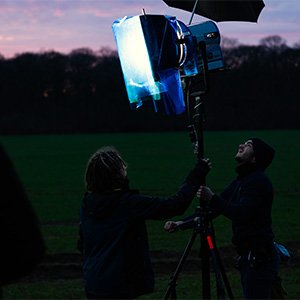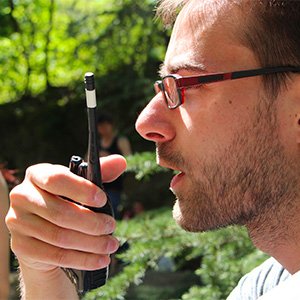
FACULTY

ARMELLE MAHE
___
Joint Managing Director

STÉPHANE PIERRAT
___
Joint Managing Director






For 35 years, 3iS Paris has offered an exceptional learning environment. The campus is located in the midst of a busy business park in Saint-Quentin-en-Yvelines, just a 20-minute stroll away from the Chateau of Versailles and a 30-minute drive from Paris. The 3iS campus, covering almost 17,000 m2 over three buildings and a 200-unit exclusive student residence, forms a veritable ecosystem that replicates the working conditions of the creative industries. A unique opportunity to study and live within film sets, a 300 m2 live performance stage, cinema sets, sound mixing studios, acting facilities, drawing rooms, video game studios and so much more.
More than 1,000 highly trained professionals, industry experts and artists come to teach on the campus every year. They pass on all needed hard, as well as soft skills of their trade in innovative courses, tutorials, masterclasses and more. They also guide and supervise the realization of students’ projects, under the guidance of a specifically team dedicated leaders of each program of study.

___
Joint Managing Director

___
Joint Managing Director




3 buildings of over 16,000 m2
1 x 300-seat screening room
1 x radio studio
4 x drawing and modeling studios
1 x 140 m2 set (Haussmannian apartment with removable set)
1 x 110 m2 green screen television set
10 x computer rooms with 20 to 30 workstations
1 x Fab Lab (3D printer, laser cutter, etc.)
2 x recording studios
1 x 300 m2 live performance stage
16 x sound editing rooms
4 x sound mixing and mastering rooms
2 x digital projection booths
3 x film sets of 120 m2
70 x stand-alone editing and color-grading booths
2 x technical equipment renting facilities
Camera equipment: C100 (Canon), PMW 200 (Sony), PXW-Z190 (Sony), Z280 (Sony), FS7 (Sony), RED (Dragon 6K, Scarlette)… Cameras: Alpha 7s II and III + various lenses + DJI Ronin, Osmo stabilizer… Drones: Phantom IV, Dji Inspire, Mini 3… Machinery: Cranes (ABC, Hague), dolly, various sliddeR+r…
Traditional and Led lighting: Film projectors: various open-face projectors or Fresnel lenses (blondes; mandarins, 1KW Fresnels…), Alladdin, Astera Helios, Aputure minette… Live show projectors: PAR 64, cut-outs, slave (Colorado, Robin 600, Spot, Wash…), bars (Funstrips)…
Lighting consoles: Grandma Light, UltraLight, Command Wing…
Diffusion / L-Acoustic park: WST Line source system (KARA, DVDOSC, ARCS,), KS28, SB18, SB15, … Coaxial-mount loudspeakers type X12, X8, … Dedicated L-Acoustic amplification: LA48, LA4X, LA8, LA12X, …
Microphone and recording equipment: For voice recording (cinema): SM58 (Shure) M88 (Beyer Dynamic), E835 (Sennheiser), 4041 (Audio-Technica), HF Kit (Sennheiser) For voice recording (studio): M160 (Beyer Dynamic), U87 and U89 (Neumann), TLM103… Recorders: Zoom H6, mixpre-3, Tascam… For instrument recording: Kit Audix, SM57 (Shure), Beta 52 (Shure)… For ambient sound: Duo A1 (Prodipe), KM184 (Neumann), MKH and ME range (Sennheiser)…
Sound and monitoring systems: HS7, HS80, MSP5 (Yamaha), MK2, Eon (JBL), MS40 (Behringer) monitoring loudspeakers…
Mixing consoles and audio peripherals: Analog consoles: Mackie (Yamaha), GL3800 (Allen & Heat)… Digital consoles: VI1, SI Expression, SI Impact (Soundcraft); SQ6 (Allen and Heath); WING (Behringer); M7CL (Yamaha), Calrec Brio…
Multi-camera rigs: Blackmagic HD and 4K mixers, Tricaster TC1 and TC2 and Sony XVS 6000, robot cameras (Panasonic)…
Software: Adobe Suite, Da Vinci Resolve, Avid Media Composer, Protools, Ableton, Logic Pro X, Toonboom, Dpaint, Unreal Engine, Unity, Zbrush, Substance Painter, Celtx, Avid Media Composer Ultimate, Logic Pro…
Computers: Mac Studio, Mini Mac, Dell precision, Ilok keys…
Rental: Alexa and F55 filming units (Panavision); Projectors, Cinema machinery (Lumex, Cinesyl, Panalux); Live Performance consoles and projectors (Remote, Novelty group, 4J); Backline (Tomahawk, Easy Backline); 664, 633, Sanken capsules (DCA, Tapage and Nocturne)
3iS Paris
4 rue Blaise Pascal
78990 Élancourt
+33 1 30 69 64 48




The sound director installs, regulates and maintains sound equipment for live use. He or she manages a team of technicians who help install and make changes to the set. As team leader, the sound director writes a technical file (technical data sheet, planning and budget) and is responsible for mixing in real time.









Working alongside the director, the script supervisor oversees the continuity of the motion picture during all stages of filming and production. They seek to maintain coherence between the scenes and ensure that what’s being filmed matches the written script. They are also responsible for keeping track of the film production unit’s daily progress.


Cinema, series, clip or advertisement, the scriptwriter creates stories to arouse viewers’ curiosity. Whether creating or adapting a story, the scriptwriter is a fully-fledged author who draws on multiple references, either literary or from everyday life. Working alone or as part of a team, the scriptwriter starts by drafting a synopsis (summary of the story) which develops into an increasingly detailed plot. The dialog continuity is therefore a very precise document indicating the plans for a scene, their duration, the positioning of the camera, and so on. In order to set the pace, the scriptwriter cuts the narrative into sequences that often correspond to a change of scenery, time or action. The scriptwriter may also write the dialogs for a film and is sometimes its director.

The first assistant director (AD) is the director’s right hand. They handle the logistics of running the set during production and are the liaison between the director and the rest of the crew. They create and manage the shooting schedule and shot lists, coordinating with all department heads.






The boomer is also known as the sound assistant and works with the chief sound operator during filming. He or she is responsible for placing the main microphone and works in all types of structure: studios, auditoriums, mobile units, sound trucks, film sets, concert halls, radio, television, etc.

There are a wide variety of sections of the entertainment industry that a Production Assistant may decide to work in. Film Production Assistants may serve on the set of a motion picture, running errands for Directors and Producers and informing Actors and Crew Members of their call times. They are integral to a shoot whether it’s for a film, TV show, music video, or commercial.


The editor plays a vital role in creating a documentary, a work of cinematic fiction or a report, guaranteeing the narrative coherence of the film while respecting its production style. The editor’s aim is to hold the spectator’s attention by selecting the best images from the film rushes. He or she organizes the elements, both images and sounds, which will create meaning and provides them with a dramatic narrative and construction. The editor works closely with the producer after filming. Editors increasingly use virtual audio-visual editing software such as AVID Media Composer and Premiere Pro.








Cinema, series, clip or advertisement, the scriptwriter creates stories to arouse viewers’ curiosity. Whether creating or adapting a story, the scriptwriter is a fully-fledged author who draws on multiple references, either literary or from everyday life. Working alone or as part of a team, the scriptwriter starts by drafting a synopsis (summary of the story) which develops into an increasingly detailed plot. The dialog continuity is therefore a very precise document indicating the plans for a scene, their duration, the positioning of the camera, and so on. In order to set the pace, the scriptwriter cuts the narrative into sequences that often correspond to a change of scenery, time or action. The scriptwriter may also write the dialogs for a film and is sometimes its director.

The sound designer is a combination of composer, acoustician and sound engineer and produces background noise, sound effects and music on demand according to precise specifications.

The video operations technician may work in a variety of environments: on set, in a natural outdoor setting, or in a television studio control room. The video operations technician installs the shooting equipment, adjusts the projectors and spotlights, and ensures that a live TV program is appearing on screen. They also videorecord sequences, manage equipment maintenance and take part in technical installation and investment projects.

In the studio, the sound technician is the engineer’s assistant. Their role involves preparing for the session: setting up instruments, greeting the artistes, installing the microphone kit, cabling and testing. In the booth, they configure the console and recording software.